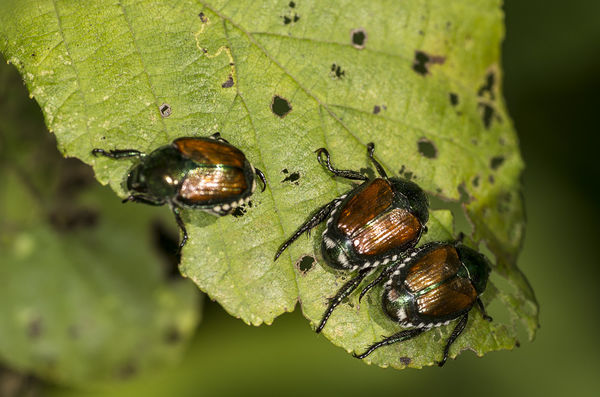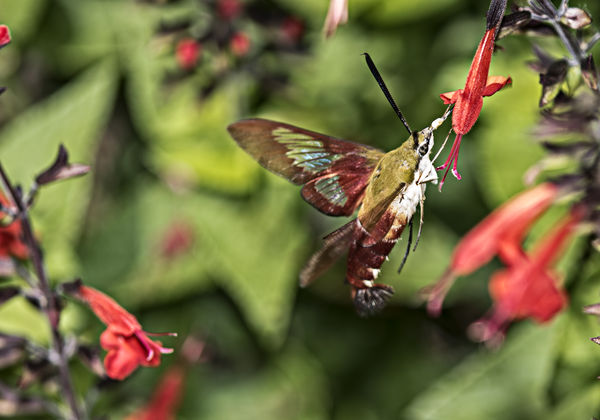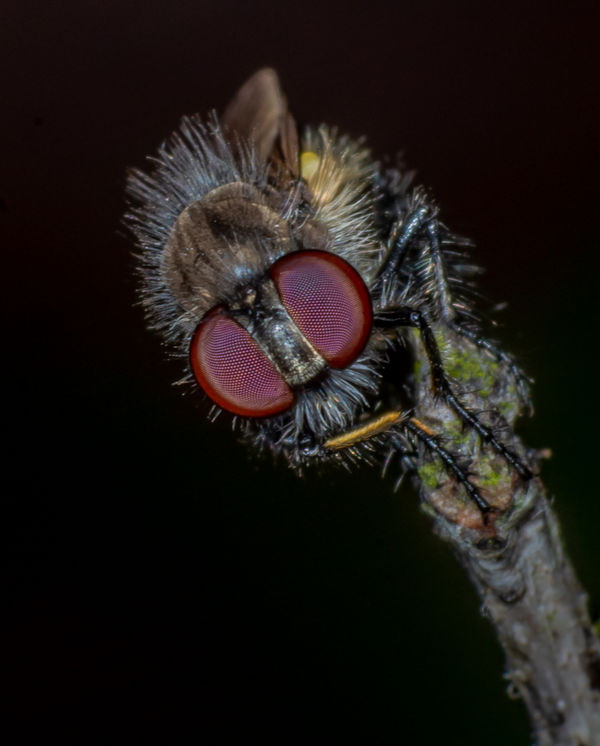Add Nikon Macro Lens
May 25, 2018 09:59:47 #
CO wrote:
Tamron came out with a new lineup of SP prime lenses. Their new 90mm f/2.8 SP VC is supposed to be excellent. It has vibration compensation, a metal lens barrel, and is fully weather sealed. I purchased their new 45mm f/1.8 SP VC lens for my Nikon's. I've been impressed with it.
The Nikon 105mm macro is excellent. You can't go wrong with that lens.
The Nikon 105mm macro is excellent. You can't go wrong with that lens.
The Tamron 45mm is a fantastic lens--and at a stunning price now.
May 25, 2018 10:10:18 #
Brucej67 wrote:
You must not have problems holding heavy lenses and be steady. I like the Sig 150mm over their 180mm, I find it achieves focus faster and is lighter. The Nikon 105mm f2.8 G is a beautiful lens especially mounted on a crop frame camera (D7200 and D500) and gives me excellent results. Off course when shooting live insects it is close up photography not true macro, but it does allow you to get close up and personal with your subject.
Actually, the weight isn't an issue for me and tripod-like steadiness is not important as I use a Ray Flash unit for illumination, with the rig I made from various ReallyRightStuff components. Again, I invite you to take a look at the shotson my website - http://www.fatelyfoto.com

May 25, 2018 10:19:15 #
kpmac wrote:
The 105mm is a fine lens. You will see many wonderful macros on this site from that lens. I, however, bought the Tokina 100mm for a much lower price and I love it. Reviews for it are great. The push/pull auto to manual focus ring is great. It does not have vibration reduction but that feature is not really that useful for macro. Just something for you to consider if price is an issue for you. I am not trying to steer you away from Nikon.
Yeah that Tokinon 100mm/F2.8 is a gem. By far the best lens ever made by Tokina by a large margin. Easily competes with Nikon at a super price
May 25, 2018 10:35:40 #
Very nice images on your site, and I see your rig. I am not steady (more like early stage of Parkinson) and use the Meike MK-14EXT Macro TTL ring flash for Nikon i-TTL which attaches to the filter side of the lens. I could not handle the Nikon 200mm f4 and sold it to a friend for $1,000. The Sigma 180mm f2.8 is heavy and the only time I use it is on a mono-pod which makes it difficult to use. I like the Sigma 150mm f2.8, not the fastest focusing lens in the arsenal, but easy to hand hold and I usually couple it with the D7200 or D500. On my FF cameras (D4, D800, D810 and D850) I like the Nikon 105mm f2.8, 60mm and the Tamron 180mm. I have attached some of my close up shots with the macro lenses.
f8lee wrote:
Actually, the weight isn't an issue for me and tripod-like steadiness is not important as I use a Ray Flash unit for illumination, with the rig I made from various ReallyRightStuff components. Again, I invite you to take a look at the shotson my website - http://www.fatelyfoto.com
May 25, 2018 11:06:25 #
DavidPine
Loc: Fredericksburg, TX
I have the Nikon 105G f/2.8 and Nikon 200mm f/4 macro. Start with the 105G and you'll be happy.
boncarbo42 wrote:
Newbie just getting started late and saying thanks to the members and their educating posts. I am wanting to add final (my wife's hope) lens to my batch and wanting a dedicated macro to use on a Nikon D600 or D500. Considering a refurbished Nikon 200/f4 thru B&H. Have not done macro previously so welcome any suggestions of that vs the Nikon 105mm. Thinking the distance from lens to subject is important. Appreciate any thoughts
May 25, 2018 11:39:27 #
Brucej67 wrote:
Very nice images on your site, and I see your rig.... (show quote)
Thanks for your kind words - here's one I took recently with the 200MM and that rig (using a D600)
May 25, 2018 11:54:57 #
Here are a couple I've taken over the last few days with my MF 105... This Robber fly (Hologopon) is pretty small, maybe 5-6 mm's in length.
May 25, 2018 11:57:46 #
FreddB
Loc: PA - Delaware County
Screamin Scott wrote:
My niche is macro. Don't be overly concerned with ... (show quote)
Just out of curiosity...when you head out to shoot, how many of the 8 lenses do you (or the sherpa) carry? How do you decide which to take?
May 25, 2018 12:00:53 #
Normally it's the older manual focus 105mm as that is what I like best.
FreddB wrote:
Just out of curiosity...when you head out to shoot, how many of the 8 lenses do you (or the sherpa) carry? How do you decide which to take?
May 25, 2018 12:20:08 #
You got the center very well, I like the detail.
f8lee wrote:
Thanks for your kind words - here's one I took recently with the 200MM and that rig (using a D600)
May 25, 2018 12:22:35 #
Wow your 105mm serves you well, great detail shots, I have the newer 105mm G and love its clarity, lightness (carrying that is) and it works well on both my DX and FX cameras.
Screamin Scott wrote:
Here are a couple I've taken over the last few days with my MF 105... This Robber fly (Hologopon) is pretty small, maybe 5-6 mm's in length.
May 25, 2018 12:28:06 #
amfoto1
Loc: San Jose, Calif. USA
boncarbo42 wrote:
Newbie just getting started late and saying thanks to the members and their educating posts. I am wanting to add final (my wife's hope) lens to my batch and wanting a dedicated macro to use on a Nikon D600 or D500. Considering a refurbished Nikon 200/f4 thru B&H. Have not done macro previously so welcome any suggestions of that vs the Nikon 105mm. Thinking the distance from lens to subject is important. Appreciate any thoughts
200mm is a fairly specialized type of macro lens. 105mm is more of a "general purpose" focal length macro on both FX and DX cameras.
I use Canon gear, but similar focal lengths. My macro and near macro lenses include:
45mm Tilt-Shift (used mostly indoors for small product photography)
60mm Tamron SP (crop only, approx. 9 inch min. focus distance at 1:1)
65mm (specialized ultra high magnification lens, up to 5:1... minimum 1:1)
90mm Tamron SP (vintage, manual focus/manual aperture)
100mm Canon (most used general purpose, approx. 12 inch min. focus at 1:1)
180mm Canon (far less frequently used, approx. 18 inch min. focus at 1:1)
90, 100, 105mm is what I recommend for a general purpose or a first and only macro lens... it's a reasonable compromise of working distance, size and ability to hand hold it.
While I use a tripod or monopod a lot for macro work... the longer focal lengths 150, 180 and 200mm pretty much require it. I mostly just hand hold the 60, 90 or 100mm. The other lenses are pretty much tripod only (the 45mm for the type of subjects... the 65mm requires a tripod due to the ultra high magnification... the 180mm is pretty difficult to hold steady).
Extra long macro also render very shallow depth of field, so you are more likely to need to stop them down to smaller apertures, which in turn will require slower shutter speeds (and/or higher ISOs). This makes them even more likely to need to be used on a tripod.
Here's an example shot with the 180mm without a tripod. However, the camera and lens were sitting directly on the ground instead. Note the extremely shallow plane of focus/depth of field:
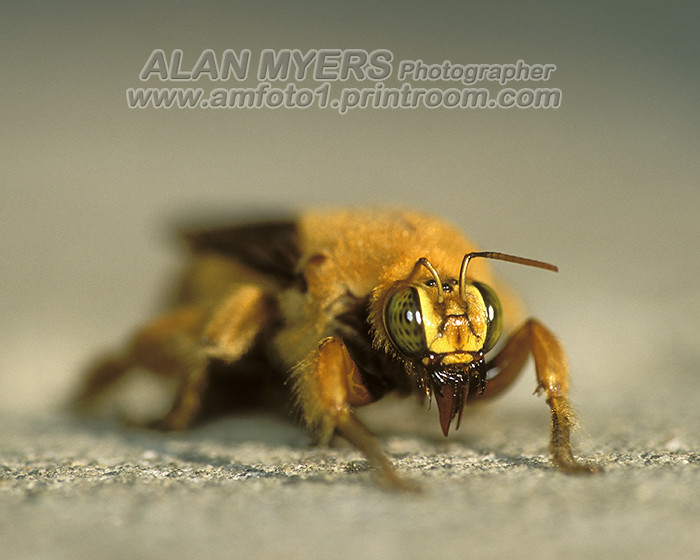
This tarantula "portrait" was also shot with the 180mm, on a monopod...

These were all shot hand held with 90mm or 100mm...
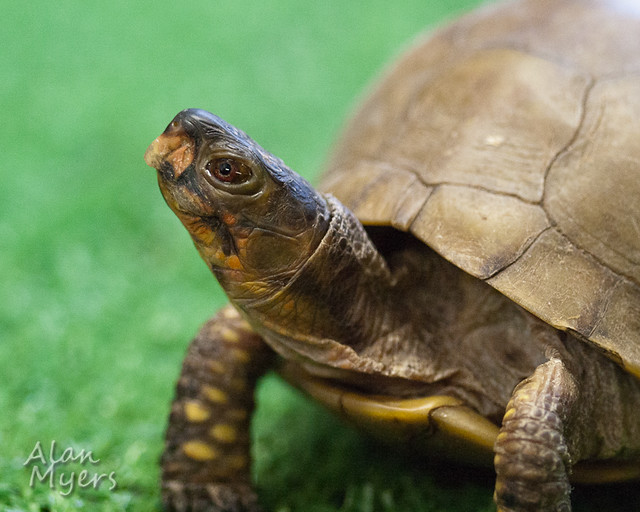


These were also done with the 100mm, although this time I supported the camera and lens on an upside down 5 gallon paint bucket (but only because I was holding a flash in my left hand)...


NOTE: When comparing the specifications of macro lenses, in particular, be aware of the difference between "minimum focus distance" (MFD) and "working distance". Usually you'll only find reference to MFD, which is measured from the subject to the camera's film/sensor plane... But some of the stated MFD is occupied by part of the camera, the lens itself and anything you have mounted on the front of the lens (i.e., lens hood, ring flash, filters, etc.) Working distance is what remains after you deduct all that... the distance between the subject and the very front of the lens and/or it's attachments.
My Tamron 60mm, Canon 100mm and Canon 180mm lenses are all "Internal Focusing". As Scott states, this design doesn't grow longer when focused closer... However, IF macro lenses do change their effective focal length. I have no way of measuring that, but have read and heard that the IF Canon 100mm is actually more of a 70mm when it's set to it's max magnification. I'd also note that set at infinity, non-IF lenses are often more compact than the same focal length IF lens. But by the time the non-IF lens extends fully to it's max magnification, it may actually be longer than the IF lens.
My Canon 65mm and Tamron 90mm are non-IF lenses and they roughly double in length when focused to their max magnifications. With the 65mm, maybe even more (it's a pretty extreme lens... at 5:1 subjects are only about an inch from the front element). Oh, also my vintage 90mm Tamron is only able to do 1:2 on it's own... I added a 20 or 25mm macro extension tube behind it to take the shot of the bee on the orange poppy above. Modern Tamron autofocus 90mm are able to do full 1:1 without any added extension. Tamron makes two models of those: A cheaper one without VC is non-IF and slower autofocusing "micro motor". The more expensive one has VC, is IF and uses faster USD focus drive.
The Tokina 100mm Macro is one of the lowest priced and a good value. An important consideration with it for Nikon shooters is that it's a "D type" lens... no focus motor in the lens itself. So it's only able to autofocus on Nikon bodies with their own focusing motor ("screw drive", it's sometimes called). I think both the original poster's cameras (D600 and D500?) have that, so no concern. But anyone using D3000-series or D5000-series Nikon, for example, will find the Tokina AT-X 100mm is manual focus only on their cameras. It's also a non-IF lens... so extends quite a bit when focused to it's MFD.
May 25, 2018 12:31:23 #
Thanks, my only nit is that it isn't an internal focus lens. It gets longer as you focus closer. That also has it benefits as well as it's disadvantages. Specifically in that the true focal length is less than stated if the lens isn't focused to infinity (and of course it wouldn't) and that affects working distance to your subject.
Brucej67 wrote:
Wow your 105mm serves you well, great detail shots, I have the newer 105mm G and love its clarity, lightness (carrying that is) and it works well on both my DX and FX cameras.
May 25, 2018 12:37:42 #
Excellent macro work looks like you nailed everything perfectly. It does not matter the gear you used, but it does matter that you know to get the best out of the gear you own.
amfoto1 wrote:
200mm is a fairly specialized type of macro lens. ... (show quote)
May 25, 2018 13:36:00 #
boncarbo42 wrote:
Newbie just getting started late and saying thanks to the members and their educating posts. I am wanting to add final (my wife's hope) lens to my batch and wanting a dedicated macro to use on a Nikon D600 or D500. Considering a refurbished Nikon 200/f4 thru B&H. Have not done macro previously so welcome any suggestions of that vs the Nikon 105mm. Thinking the distance from lens to subject is important. Appreciate any thoughts
Without knowing what subjectd you shoot, it's hard to give advice. All of my micro work has been copy/animation stand work with a 55 Micro Nikkor or an enlarger lens.
If you want to reply, then register here. Registration is free and your account is created instantly, so you can post right away.




